110v-230v AC to Mysensors PCB board
-
@axillent Ok. thank you. At my home it is like that. sure it needs a smart switch. and fibaro seems to be very smart (very small, small transfo, and steal energy, but z wave so I think it may use sync comm to use less energy. Maybe I am wrong and don't know how it is inside).
You are right. I am thinking to use 48v power supply lighting. But I cannot change my electrical network. So two wire. And I hope it will be easier to steal energy and power the in wall switch node for leds. Maybe I am wrong. I will power my lightings with energy harvesting (solar, or maybe I have another idea but i have to make experiments.Your lighting project is very smart too. can't wait to see it too.
-
@ServiceXp : are you talking about my relay board? if yes, I will check what I can do in the end of the week and post my project in a new topic (I think I have to rearrange the board to fit the step down).
-
@ServiceXp , I'm also looking for a way to power a node from the available-standard two wire switch. It should be possible to steal some milliamps from there, but I don't know even from where to start researching it.
-
Hi All,
I'm not sure if I understand the 2-wire thing completely, but in my house (which is kind of standard I guess in Europe) I have 3 wires going from the electricity cabinet, to the light switch and then to the light bulb. These cables are Phase, Neutral and Ground.
As I don't want to rewire my entire grid, I decided to build these boards so I can reuse the current wiring. I ended up with the following "schematic" if I can call my paintskills like that.
The enclosure at the bottom of the drawing would be placed behind the current light switch, while the enclosure at the top of the drawing would be placed right above the light bulb. This requires little to no modification of my current wiring.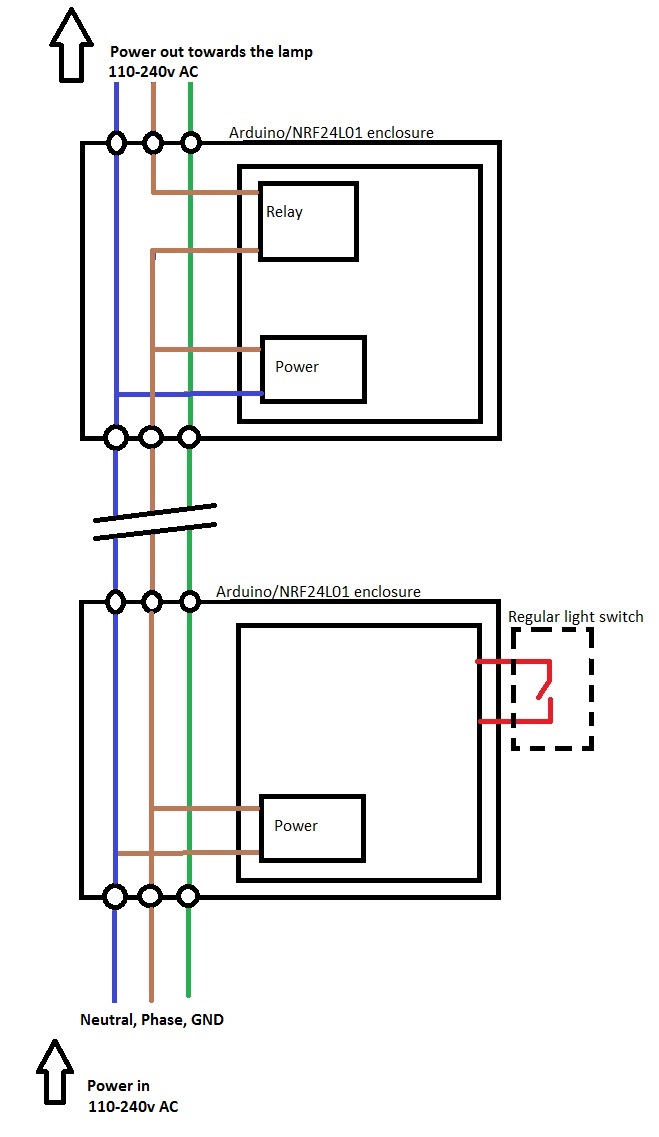
@ServiceXP, I'll update the title to include the 110v information.
-
Why don't you place the relay behind the switch, too? This way you could save half of the nodes.
I have just ordered some of those power supply modules. Very interesting, cheapest similar ones I found before were about 14 €.
-
This is what I have done for a light bulb in the pantry with a motion sensor. Its a mess as it is a proof of concept.
I have a 5 separate "modules" as such. Arduino Pro Mini, Motion Sensor, Radio, 5V AC/DC transformer and a 5V Relay. So clearly it is too big and a bit of a mess! So I am really interested in your PCB @aproxx! Do let us know how it works for you.

-
This is what I have done for a light bulb in the pantry with a motion sensor. Its a mess as it is a proof of concept.
I have a 5 separate "modules" as such. Arduino Pro Mini, Motion Sensor, Radio, 5V AC/DC transformer and a 5V Relay. So clearly it is too big and a bit of a mess! So I am really interested in your PCB @aproxx! Do let us know how it works for you.

-
There is something similar I'm working on. Although mine is more like a solid state relay. And it can be used as an AC dimmer. But has the same concept with AC-DC converter. I used one from Vigortronix. It has a 3.3V output.
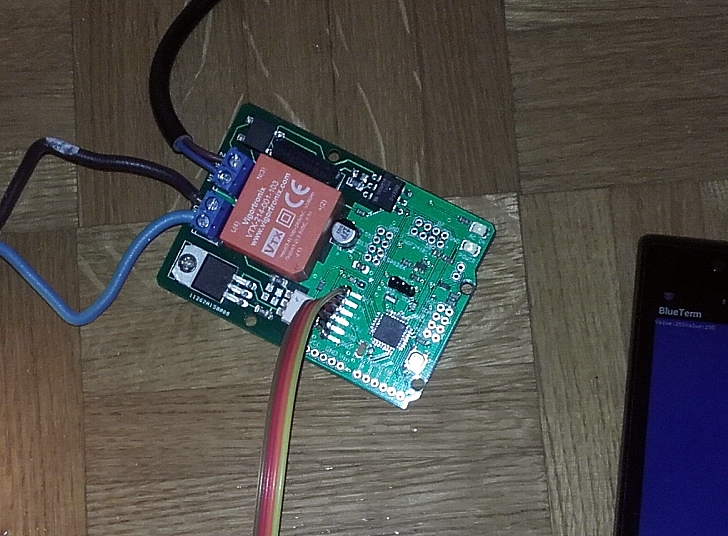
Here it is controlled with Bluetooth serial connection
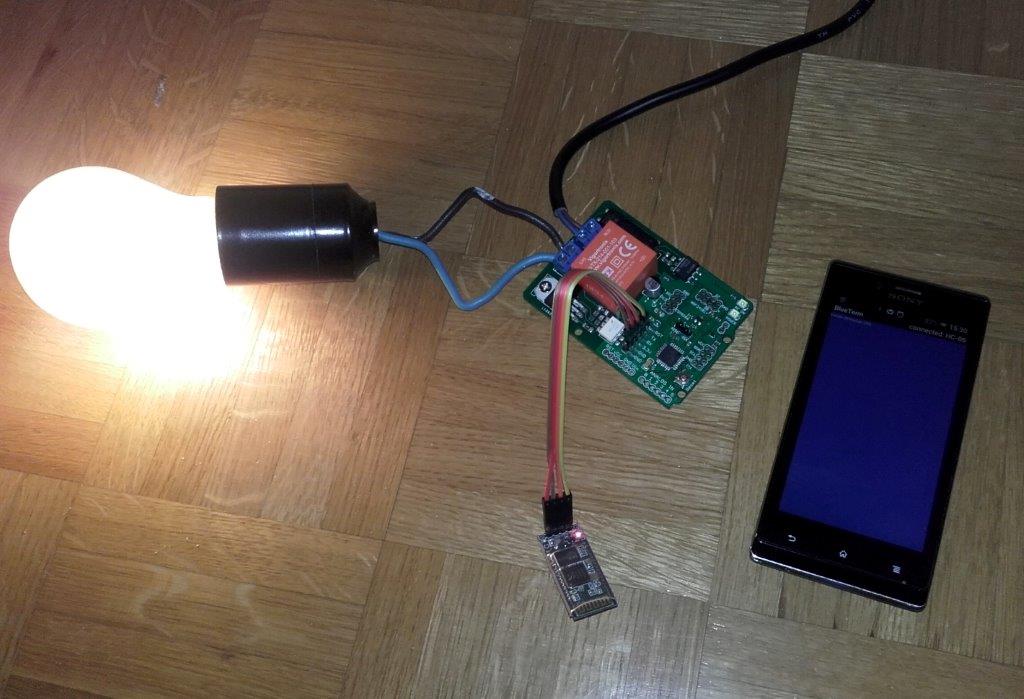
This is how the board looks like
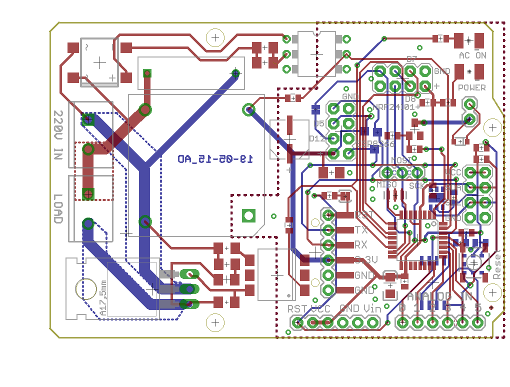
If anyone wants it, let me know.@aproxx I like your form factor. Great find with that AC-DC converter.
-
Those are even much smaller (3.3v , 25x38x17 mm , 3w) and have similar price. I've got one (still to experiment with)
-
Too bad these Ac Dc are so expensive and little big. But good quality for sure.
@ceech : looks like a pretty board. I am interested in your files please. It could be useful..:wink:
@scalz Here you go:
https://github.com/ceech/AC-dimmer
Enjoy. -
thank you!
-
This is really interesting.
If this PCB succeeds i will order maybe 10-15 of them. They need to be so small it can be mounted inside/behind the wallswitch and i also want to combine it with some sort of motion detector fittet in the wallswitch as well...
Cool really looking forward to this... keep up the good work!
-
@Jan-Gatzke You are absolutely right. No idea on why I've never thought about that!
I have now redesigned the board to fit a relay as well. Size is still limited to 45 by 45mm, so it should be quite easy to place them behind a light switch.I hope to receive my PCB boards next week, after which I'll add all components to the board and start testing it. If all goes well, I'll be submitting the new design with relay to dirtyPCBs to have those printed too.
Just a sneak peak of the new board:
Top:
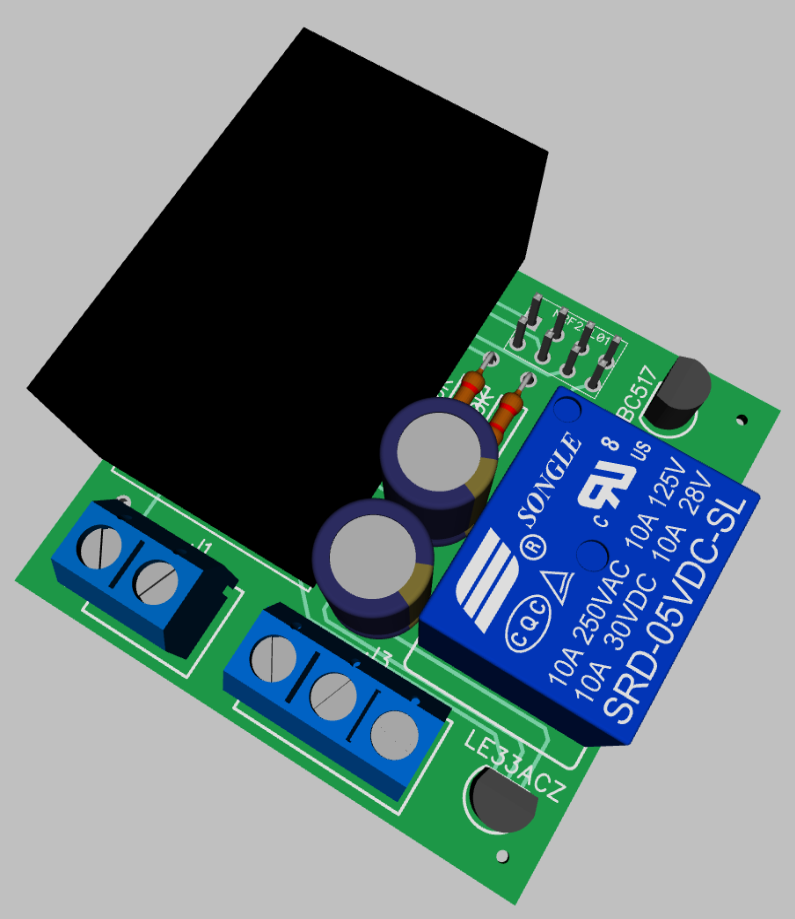
Bottom:

In the following days I'll start designing a 3d-printable casing to fit the board.
As soon as I have confirmed that the board with relay is working fine, I'll submit the PCB design here together with the 3d printable casing. Due to slow shipping and limited spare time I expect this to happen in about 4 to 7 weeks. -
YES - this is really what im looking for!! :)
Well done @aproxx - i will follow this closely.If you have the space - the pcb could have a input/hole for an external sensor to pin 3 (if unused or another one). so you can add say external motion sensor or temp as well.
Can you list the parts so there is a possibility to start ordering those?
-
@sundberg84 Thanks for the kind words!
The new design (with relay) indeed has a few digital pins available. I've included the following in this design:- 4 digital in and output pins. Pin 3, 4, 5 and 6. Pin 3 is also used to switch the relay, so 3 other digital pins are available to connect other things like motion sensors and switches.
- 1 Analog input pin. Pin A0.
- 2 5v pins.
- 2 Ground pins.
- A few extra empty pins which aren't connected to anything, but can be used to add some custom things if needed.
Bill of materials is available below, together with Gerber files, and DIP file (as I'm using Diptrace to design my PCBs).
Please keep in mind that this is only my second time designing PCBs, so if you'd like to be 100% sure it works I would recommend to wait until I've tested the board and confirmed that everything is working fine.
But feedback is always welcome!
Mysensors v2.1 UNTESTED.rar -
@sundberg84 Thanks for the kind words!
The new design (with relay) indeed has a few digital pins available. I've included the following in this design:- 4 digital in and output pins. Pin 3, 4, 5 and 6. Pin 3 is also used to switch the relay, so 3 other digital pins are available to connect other things like motion sensors and switches.
- 1 Analog input pin. Pin A0.
- 2 5v pins.
- 2 Ground pins.
- A few extra empty pins which aren't connected to anything, but can be used to add some custom things if needed.
Bill of materials is available below, together with Gerber files, and DIP file (as I'm using Diptrace to design my PCBs).
Please keep in mind that this is only my second time designing PCBs, so if you'd like to be 100% sure it works I would recommend to wait until I've tested the board and confirmed that everything is working fine.
But feedback is always welcome!
Mysensors v2.1 UNTESTED.rar@aproxx Looks great so far. I am missing a diode and snubber components around the relay. Or are those just not visible? Didn't have a look at the files, yet. In another thread someone posted a diy solid state relay with triacs. This would be a little bit smaller than the relay and would less likely fail. I would add a fuse in front of the power supply, too.
I will definitly have a look at Diptrace. I like those 3D previews. :)
-
@Jan Gatzke There is a diode in place, but it just isn't visible in that current 3D design. I've used following schematic (minus the LED) to connect the relay to pin 3 of the Arduino :
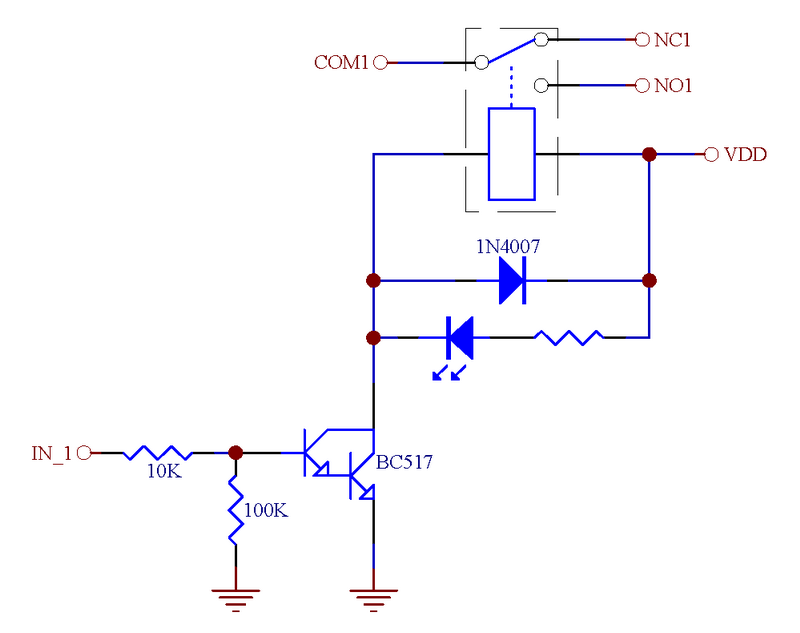
What do you mean by "less likely to fail" about these relays? I've been using them for a while now, but never had any issues with these. Or do you think that they might show this problem when using them for a long time?
